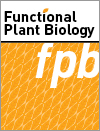Hosta ventricosa is commonly found in gardens and is favored by many. Yet, extended exposure to intense light can lead to the leaves wilting and turning yellow, diminishing their decorative appeal. We isolated and characterized a particular gene (violaxanthin de-epoxidase) in H. ventricosa plants and found that the genetically modified tobacco plantlets displayed enhanced tolerance to strong light. This outcome offers valuable insights for the potential creation of new Hosta plant varieties that can better withstand intense light conditions.
FP24180 Abstract | FP24180 Full Text | FP24180PDF (2.5 MB) | FP24180Supplementary Material (798 KB) Open Access Article






